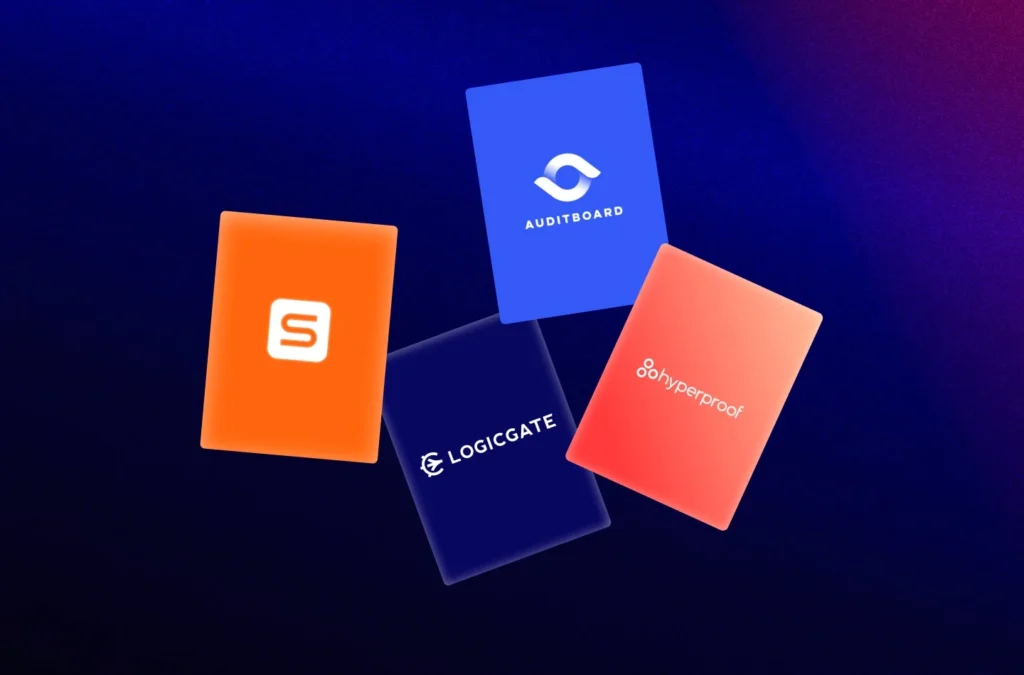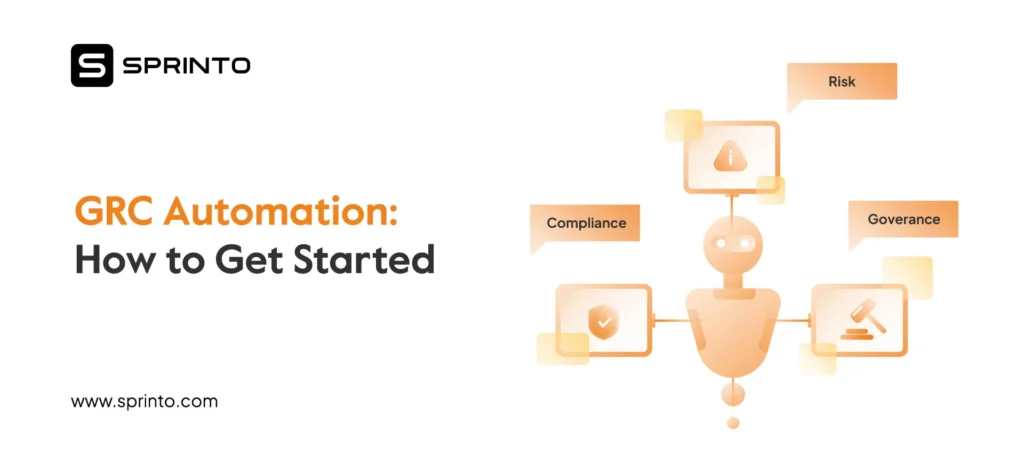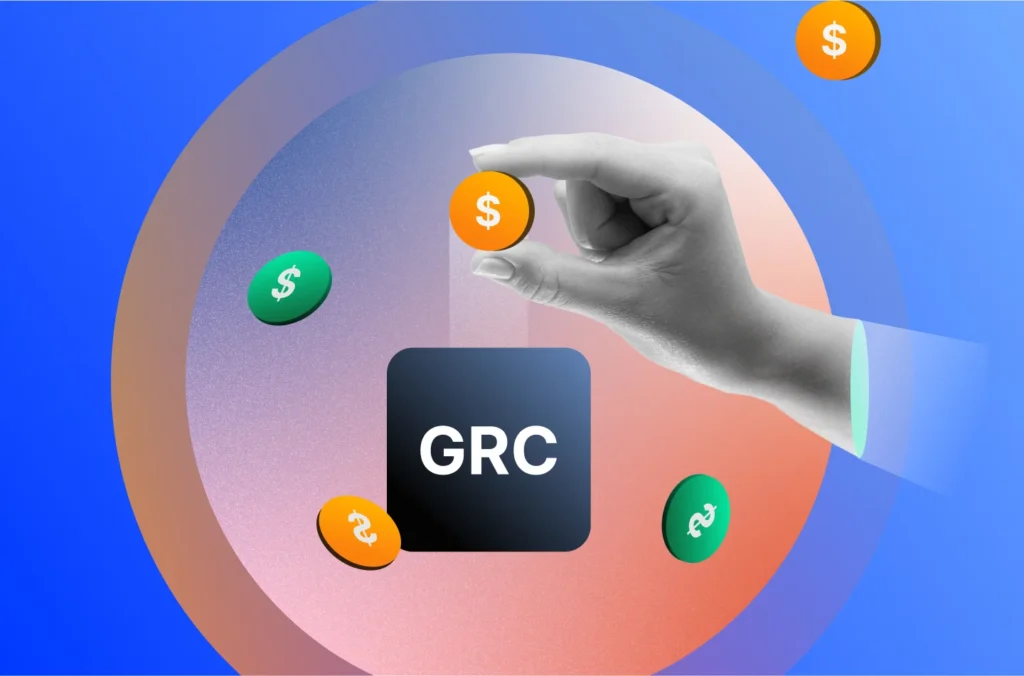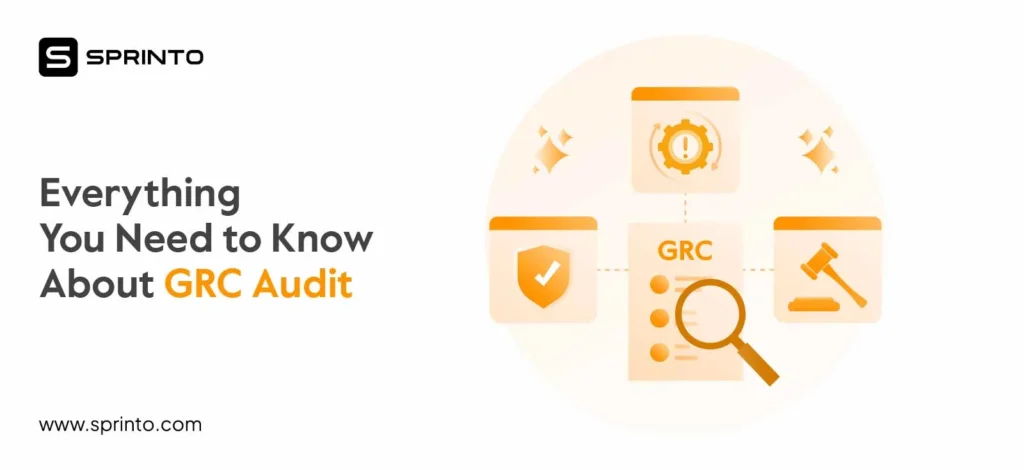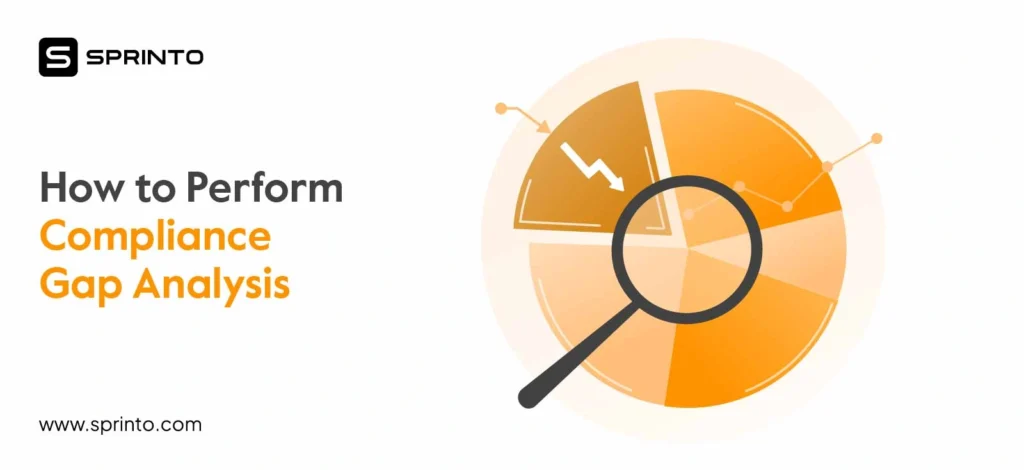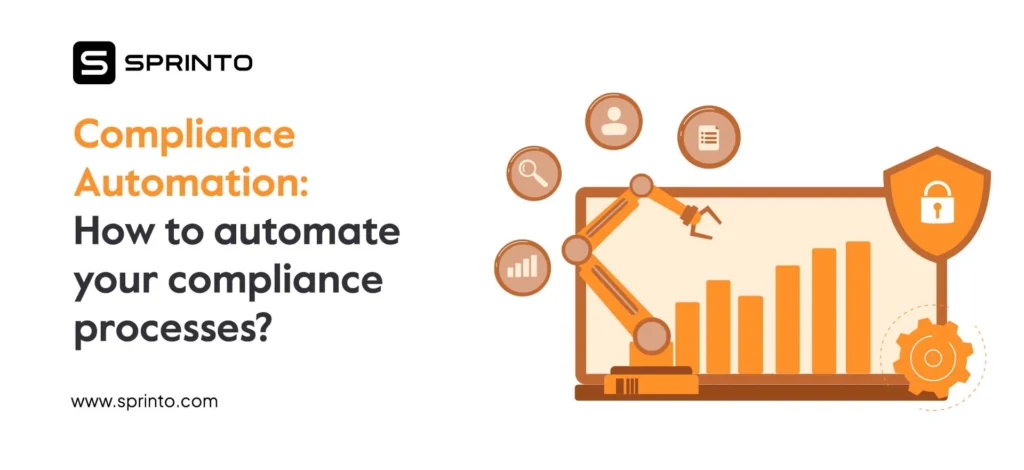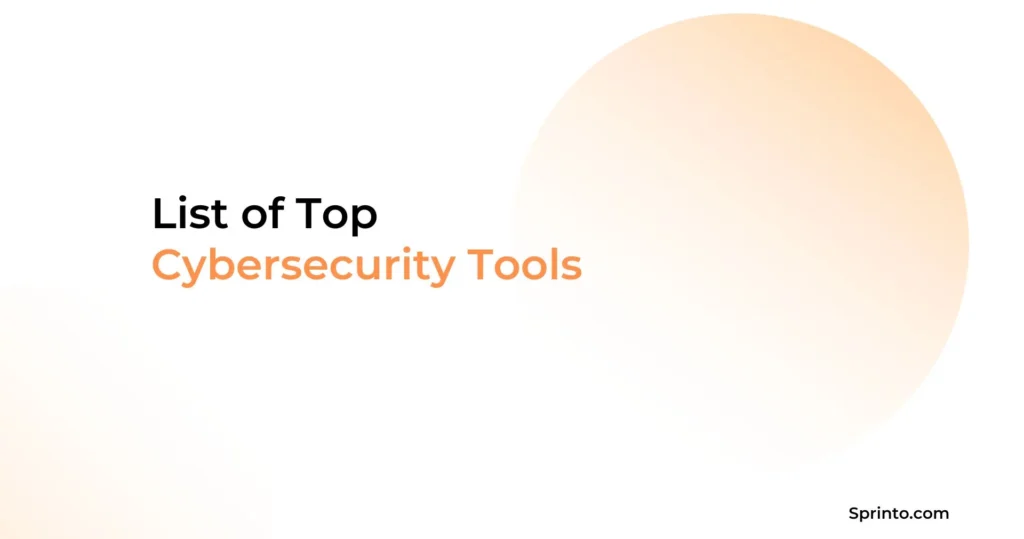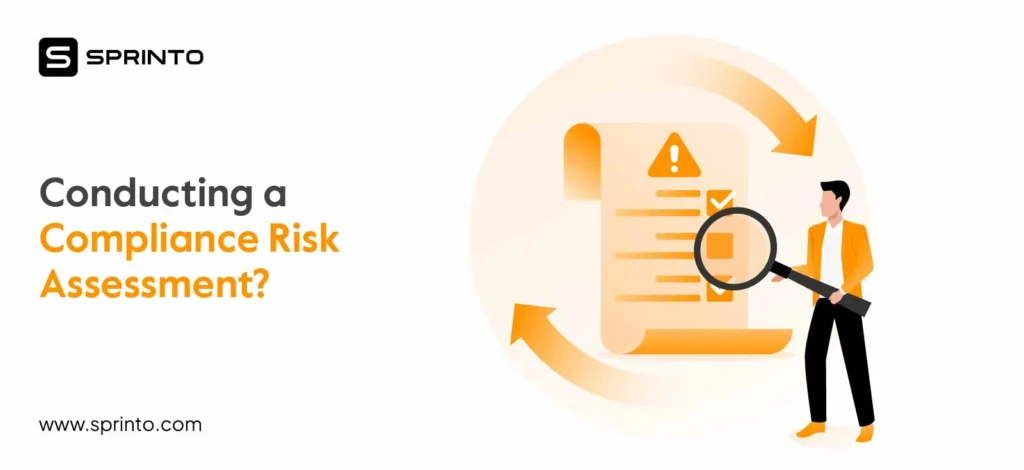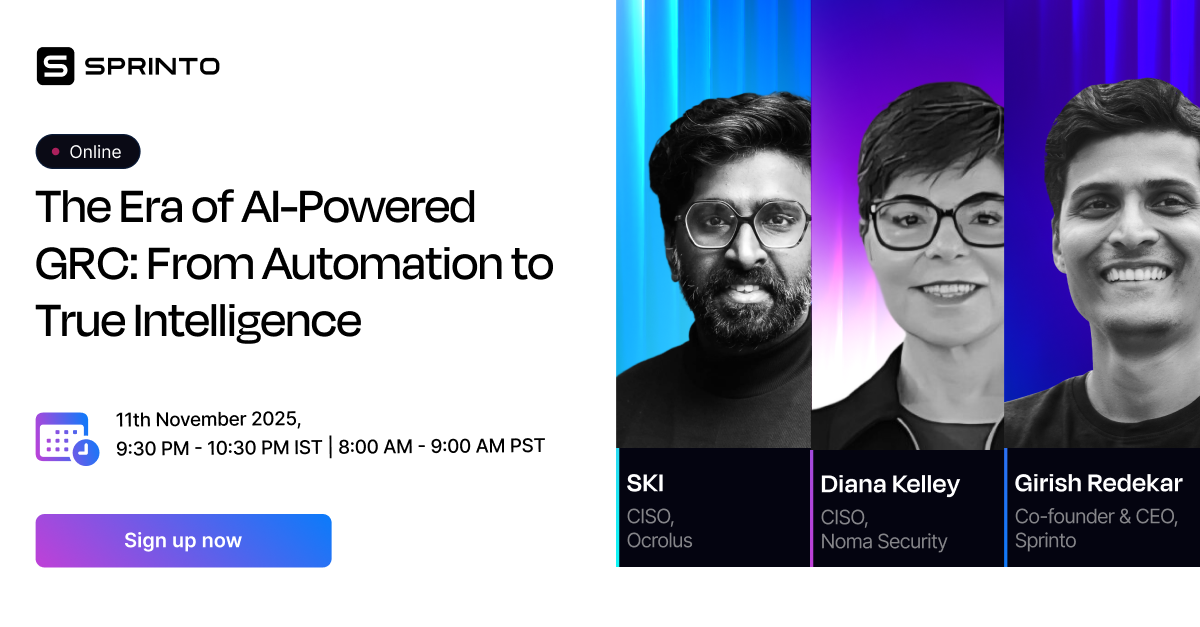If your compliance system feels increasingly stretched with more frameworks, more vendors, more evidence requests, you are not alone. Many teams reach a point where their existing tools are reliable but not scalable, prompting them to consider whether a GRC platform or compliance automation software can effectively handle the next stage.
It typically occurs after the first few successful audits, when your compliance program is functional but rapidly expanding. The number of frameworks increases, audit requests start overlapping, and leadership wants more visibility into risk posture. At that point, spreadsheets, shared drives, and half-automated tools begin to slow you down instead of supporting you.
This is when most teams pause to rethink their systems. Both GRC platforms and compliance automation software promise to simplify compliance, but they do so in distinctly different ways. Understanding how they differ is the first step to choosing a system that scales with your business rather than against it.
GRC platforms offer structure, policy control, and executive oversight but are slow to deploy and hard to maintain.
Compliance automation software focuses on speed and scalability, automating evidence collection and monitoring for faster, continuous readiness.
Sprinto combines both strengths, giving teams the governance depth of GRC and the efficiency of automation in one unified platform.
What is a GRC platform?
A GRC platform is an enterprise-grade system that unifies governance, risk, and compliance management under one roof. It provides tools for policy management, enterprise risk tracking, internal audit workflows, and governance oversight.
These platforms are typically used by large organizations where departments such as finance, legal, IT, and operations need to collaborate on corporate governance and risk management.
Core capabilities of a GRC platform include:
- Centralized policy and control management: A GRC platform should create, store, and manage policies and controls in a single system. This will ensure consistency, accountability, and easy, anytime traceability across departments.
- Risk and issue tracking: Your GRC platform will also identify, assess, and monitor risks in real time. There will always be clear ownership and workflows to document how every issue was/ is to be resolved.
- Audit scheduling and remediation workflows: It will typically help plan, assign, and track audits end-to-end. This includes automating follow-ups and CAPA (corrective and preventive actions) to close findings efficiently.
- Board-level dashboards and reporting: GRC platforms also give executives a complete, real-time view of compliance status, key risks, and audit outcomes to support informed decision-making and governance oversight.
What happens behind the scenes: Powerful, traditional GRC platforms can be complex to deploy and maintain. Implementation cycles often span months and require full-time administrators to keep systems up to date.
What is compliance automation software?
Compliance automation software focuses on automating the security and compliance lifecycle for specific frameworks such as SOC 2, ISO 27001, HIPAA, PCI DSS, and GDPR.
It emerged from the needs of SaaS, fintech, and cloud-first companies seeking faster, more scalable ways to achieve and maintain compliance. These tools connect directly to your cloud services and business applications to automatically collect evidence, map controls across frameworks, and monitor compliance continuously.
Core capabilities of a compliance automation software:
- Automated evidence collection: A compliance automation platform connects to everyday tools, like cloud providers, HR systems, and access managers, to automatically gather the proof auditors need. This eliminates repetitive work and prevents teams from having to chase screenshots or logs before every audit.
- Framework-specific control mapping: The software links one control to multiple frameworks such as SOC 2, ISO 27001, HIPAA, PCI DSS, and GDPR. This means you perform security action once to meet several requirements, eliminating duplication. As a consequence, your team saves a ton of time.
- Continuous monitoring: A compliance automation tool typically monitors control health constantly and alerts you when something drifts out of compliance. This allows you to fix gaps early instead of discovering them at audit time.
- Real-time dashboards and reports: Teams can see their compliance status at any moment through live dashboards. A compliance automation system allows you to generate audit-ready reports the instant you need to answer questions about progress and compliance coverage.
Key differences between the GRC platform and compliance automation software
Before diving into further details, it helps to see how GRC platforms and compliance automation software differ. While both aim to strengthen governance and reduce risk, they approach the goal from distinct angles; one focused on oversight, the other on execution.
| Feature / Aspect | GRC Platform | Compliance Automation Software |
| Purpose | Designed to manage governance, risk, and compliance programs across the enterprise | Built to automate and simplify framework-specific compliance workflows |
| Primary Users | CISOs, risk officers, auditors, and governance leaders | Security, compliance, and engineering teams |
| Complexity | Highly configurable systems suited for large, multi-department organizations | Streamlined tools optimized for ease of use and speed |
| Implementation Time | Requires several months to a year for full deployment | Can be deployed and functional within weeks |
| Maintenance | Needs dedicated administrative resources and regular system upkeep | Requires minimal maintenance due to its cloud-native architecture |
| Automation Level | Primarily workflow-based with limited process automation | Highly automated, covering evidence collection, monitoring, and alerting |
| Integration Focus | Integrates mainly with ERP, finance, and legacy risk systems | Integrates seamlessly with modern cloud services such as AWS, GCP, Azure, Jira, Slack, and GitHub |
Purpose
- A GRC platform provides a unified structure to manage governance, risk, and compliance across many functions. It supports risk assessments, policy oversight, and enterprise-wide reporting.
- Compliance automation software automates repetitive compliance tasks such as evidence gathering, control mapping, and monitoring to accelerate audit readiness and reduce manual workloads.
Primary users
- A GRC platform is designed for leadership and oversight roles such as CISOs, CROs, auditors, and governance managers who need cross-departmental visibility.
- Compliance automation software is built for operational teams such as compliance specialists, IT administrators, and engineers who execute controls and maintain audit readiness daily.
Complexity
- A GRC platform offers deep customization, which makes it powerful but often complex to configure and operate.
- Compliance automation software focuses on simplicity and automation, enabling teams to onboard quickly and maintain compliance without specialized administrators.
Implementation timeline
- A GRC platform typically takes months or even a year to implement because it involves extensive setup, integrations, and governance workflows.
- Compliance automation software can be deployed in weeks, allowing teams to start automating evidence collection and framework mapping almost immediately.
Maintenance
- A GRC platform requires continuous oversight and regular updates to align with organizational and regulatory changes.
- Compliance automation software is self-updating and cloud-native, which minimizes the administrative burden on internal teams.
Automation scope
- A GRC platform often automates workflows such as task routing and approval tracking, but it depends heavily on manual data entry and evidence uploads.
- Compliance automation software uses deep integrations to automatically collect evidence, test controls, and monitor compliance status continuously.
Integration focus
- A GRC platform generally connects with enterprise systems like ERP or document management tools, focusing on governance-level integration.
- Compliance automation software integrates directly with operational systems such as AWS, Azure, GitHub, or Jira to pull real-time compliance data from the source.
After seeing these differences, you might realize that GRC platforms and compliance automation software are not direct substitutes. They solve related but distinct problems at different layers of the compliance stack. A GRC platform focuses on top-down visibility and governance oversight, while compliance automation tools manage bottom-up execution and monitoring.
But more on this later. First, let us look at how the need for either system might manifest in your everyday operations and what signals it may send about your organization’s progress in its compliance journey.
When to use a GRC platform?
You might consider a GRC platform when governance and compliance become isolated functions and attain business priority status. This might indicate a need for support to drive consistency, visibility, and accountability in complex operations.
Here’s a look at some of the conditions that typically signal it is time to consider a GRC platform:
You’re managing multiple teams, departments, or regions:
If your organization has several business units or operates in multiple jurisdictions, a GRC platform helps align policies and controls under one governance structure. It gives the board and senior management the clarity they need to oversee compliance efforts across the enterprise.
You’re dealing with different types of risk across the business:
A GRC platform allows risk owners across departments to document, assess, and track operational, strategic, legal, and IT risk in a standardized way. This helps connect individual risk registers into a single enterprise-wide view that can inform better decisions.
You need compliance to align with the enterprise-wide risk strategy:
If your compliance program feeds into an enterprise risk management (ERM) strategy, a GRC platform ensures compliance data, internal audits, and policy updates flow into the same reporting structure. This alignment strengthens both regulatory assurance and strategic governance.
A GRC platform is best suited for mid-sized to large, highly regulated organizations where governance and oversight are as important as execution.
When to use compliance automation software
You should explore compliance automation software when the bottleneck shifts from oversight to execution. If your challenge is not designing frameworks but keeping up with framework expansion, automation will be a practical solution.
Here’s what it might look like in your everyday:
You’re spending too much time collecting and organizing audit evidence:
The software automatically pulls data from your connected tools and keeps it organized so you never start from zero again.
Your team is small, but your compliance scope keeps expanding:
Many teams reach a point where compliance work grows faster than headcount. Automation helps bridge that gap. It scales your output without scaling your team, giving you the bandwidth to manage more frameworks, vendors, and audits simultaneously.
You’re juggling multiple frameworks and overlapping controls:
As your company matures, one certification quickly becomes many. Automation platforms help map shared controls across frameworks like SOC 2, ISO 27001, PCI DSS, and GDPR, so one update applies everywhere. That means less repetition and fewer mistakes.
You want to stay compliant all year, not just at audit time:
With continuous monitoring, automation turns compliance into an always-on process. Instead of discovering gaps at the worst possible time, you can see issues as they appear and fix them before they ever reach your auditor.
In short: Compliance automation software is for teams that want to move from reactive audits to continuous assurance, where compliance becomes a living process rather than an annual scramble.
Try Sprinto’s Compliance Maturity Self-Assessment to find out how automation can help.
Quick overview of the advantages and limitations of each approach
| Approach | Advantages | Limitations |
| GRC Platform | Strong governance structure, centralized oversight, strategic risk visibility | Complex setup, slower adoption, limited automation |
| Compliance Automation Software | Faster readiness, scalable execution, continuous monitoring | Narrower governance scope, less suited for non-IT risks |
GRC platforms
Advantages: A GRC platform helps organizations bring all governance, risk, and compliance activities into a single, accountable structure. It gives leadership a consistent way to define ownership, measure performance, and ensure decisions are backed by policy and risk data.
Limitations: Because these systems are deeply configurable, they can take significant time and resources to implement. They also rely heavily on manual inputs, making it harder to maintain real-time accuracy without dedicated teams to manage updates.
Compliance automation software
Advantages: Compliance automation software focuses on execution and efficiency. It reduces repetitive manual work, maintains ongoing audit readiness, and allows small teams to scale their compliance programs across frameworks without adding headcount.
Limitations: While highly effective for security and IT-led frameworks, automation software typically offers less support for broader governance needs such as legal, financial, or operational risk management. As organizations grow, it may need to integrate with larger GRC systems for complete oversight.
Why modern businesses prefer compliance automation software
Agility and visibility qualify as “burning needs” more than customization or heavy process infrastructure for most growing organizations. Teams must move fast, adapt to new frameworks, and show compliance progress without adding unnecessary complexity. That is why more businesses are choosing compliance automation software as their foundation.
After all, automation eliminates repetitive manual work and replaces static documentation with live, verifiable data. You’re hogging less engineering bandwidth because evidence collection is automated. And you’re protecting organizational resilience and reputation by having issues brought to your attention before they become findings. Plus, real-time dashboards make it easier for security and compliance leaders to demonstrate progress, forecast audit readiness, and prove ROI to whoever’s asking.
So the way most teams see it, automation tools deliver faster time to value and lower total cost of ownership. They scale naturally as companies expand across regions and frameworks, which makes them ideal for cloud-first and fast-growing enterprises.
They don’t do everything you need, especially in the long term.
How the two work together
While GRC platforms and compliance automation software serve different purposes, they are most potent when used together. Many mature organizations use GRC systems as their single source of truth for governance and risk, while relying on automation tools for real-time evidence, monitoring, and reporting.
Automation software becomes the engine that continuously feeds verified data into the GRC layer when the two are integrated. This allows compliance teams to operate efficiently while giving leadership accurate insight into the organization’s overall risk and compliance posture.
Each system strengthens what the other lacks. GRC brings structure, accountability, and oversight, while automation adds speed, accuracy, and continuous visibility. Together, they cancel out each other’s weaknesses and leave organizations with their combined strengths.
The result is a connected ecosystem where strategy and execution stay in sync. Compliance stops being a once-a-year activity and becomes a continuous, measurable function supporting operational resilience and long-term governance goals. That balance between structure and speed is exactly what Sprinto helps teams achieve.
How Sprinto bridges the gap
For most modern organizations, Sprinto brings together the best of both worlds: a GRC platform’s governance depth and compliance automation’s agility. It delivers a single, connected system that manages policies, risks, controls, and audits while keeping everything monitored and audit-ready.
Sprinto connects to the tools you already use and automatically collects the proper evidence, tests controls, and monitors your compliance health across frameworks such as SOC 2, ISO 27001, HIPAA, PCI DSS, GDPR, and NIST. This keeps compliance data accurate and current and delivers continuous visibility into risk, allowing you to offer leadership reliable, real-time assurance without manual reporting.
For many mid-market and cloud-first businesses, Sprinto replaces the need for a traditional GRC platform altogether. It provides governance structure, risk visibility, and audit management in one place without the complexity or overhead of enterprise-grade systems.
For larger enterprises already running a GRC system, Sprinto becomes the automation and data engine underneath it. It feeds live, verifies compliance data into the GRC layer, reduces manual work, and keeps enterprise dashboards accurate and current.
In both cases, Sprinto closes the loop between daily compliance execution and strategic governance. It removes the friction between policy and proof, allowing teams to move faster, stay compliant continuously, and demonstrate measurable value to leadership.
Book a demo with Sprinto and experience how automation can simplify your compliance program and strengthen governance across every layer of your organization.
Summing up
Traditional GRC platforms deliver breadth and structure. Compliance automation software delivers speed and continuous assurance.
In an environment where frameworks multiply, risks evolve daily, and boards demand real-time insights, automation is no longer optional.
Modern teams combine both approaches. They anchor governance in GRC and drive execution with automation, achieving the highest efficiency and credibility.
Book a demo to see how Sprinto combines structure and speed to keep your organization continuously compliant and audit-ready.
FAQs
1. I already have a GRC tool but still spend too much time chasing evidence and updating controls. What’s the problem?
That’s a common challenge with traditional GRC systems. They provide oversight but rely heavily on manual inputs and static data. The issue isn’t your process. Your platform likely doesn’t automate evidence collection or real-time control testing. A platform like Sprinto integrates directly with your tech stack, continuously collects evidence, and keeps your compliance data current, eliminating the need for manual effort. This removes the bottlenecks that legacy GRC tools can’t address.
2. We’re a mid-market company and can’t afford heavy, enterprise-grade tools like ServiceNow, RSA Archer, or IBM OpenPages. But we still need automation, visibility, and continuous readiness. What’s the solution?
You’re describing the exact gap that modern, cloud-native compliance automation platforms fill. Instead of heavy deployments or six-figure contracts, these tools deliver integrated risk management, evidence automation, and real-time monitoring at a fraction of the cost. If you want enterprise outcomes without enterprise overhead, solutions built for the mid-market, like Sprinto, are designed precisely for that.
3. How can I prove the ROI of compliance automation to my board or CFO?
Start by tracking measurable outcomes: time saved on audit prep, automated evidence percentage, and audit findings reduction. Modern platforms provide dashboards that convert compliance performance into business metrics, showing cost savings and efficiency gains. When compliance becomes continuous, it directly reduces audit fatigue and headcount strain. That’s tangible ROI leadership can appreciate.
4. We’re scaling to multiple frameworks. How do we avoid duplicating controls and redoing the same work every year?
The key is cross-framework mapping and control reuse. Advanced compliance platforms automatically link similar requirements across frameworks like SOC 2, ISO 27001, HIPAA, and GDPR. Instead of rebuilding evidence for each audit, you reuse proof intelligently. This approach turns framework expansion from a resource drain into a manageable, repeatable process.
5. How do I know when to move from spreadsheets or basic automation to a connected compliance system?
When compliance starts pulling significant time from security, engineering, or IT operations, it’s time. The tipping point often comes when running multiple frameworks or resolving recurring evidence collection requests. At that stage, continuous automation and centralized visibility become non-negotiable for efficiency and accuracy.
Mansoor
Explore more
research & insights curated to help you earn a seat at the table.









